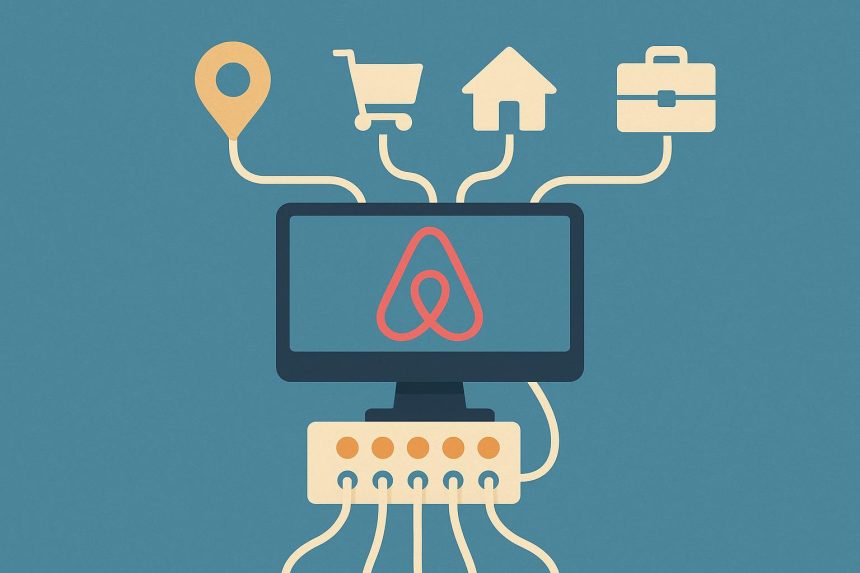If you’re scaling from a single listing to a small portfolio or simply tired of juggling calendars and messages across apps, think of channel management as your switchboard. It routes prices, availability, rules, and reservations to every storefront and back again, without drama. For a plain-English primer, bookmark Airbnb channel management explained for hosts; it lays out what connects to what, why it matters, and how to avoid the classic missteps.
Why channel management is your growth lever
Great design, strong copy, and responsive hospitality get you the first booking; clean operations get you the next 100. A modern vacation rental management software (VRMS) paired with a channel manager eliminates double-bookings, keeps your rates consistent, and turns late-night reservations into clean, automated workflows. The result is simple: steadier occupancy, fewer manual fixes, and time back for guest experience and revenue strategy.
What a channel manager actually does (in business English)
Think of your VRMS as the “source of truth” for each property: its calendar, pricing, minimum stays, house rules, and fees. Your channel manager broadcasts that truth to Airbnb (and other OTAs) and, in return, listens for bookings, changes, and cancellations, then writes them back into your system instantly. When these handshakes work, you sell the last night only once and at the rate you intended.
Quick reality check: If you still copy prices by hand or block dates in multiple places, you’re paying an “operational tax.” Channel management removes that drag so your margins grow with your listings.
Airbnb channel manager integration: how to, the owner’s version
You don’t need to be technical; you do need a sequence. Use this fast path to connect to Airbnb without chaos.
- Set your story once. In your vacation rental management software, finalize room names, photos, amenities, fees, and your three live price rules (base/flexible, a small discount for more extended stays, and a non-refundable option if it aligns with your market).
- Clean the calendar. Close out maintenance days and align minimum stays around local demand spikes (events, holidays).
- Connect Airbnb via API (not iCal). API sync supports prices, availability, rules, and reservation write-backs; iCal is calendar-only and prone to lag.
- Map content carefully. Match each VRMS field to Airbnb’s equivalents (fees, taxes where applicable, house rules). One hour here saves ten later.
- Run a live test. Change a weekend price in your VRMS and confirm it appears on Airbnb within minutes. Shorten a stay, cancel a fake booking, and verify your system updates instantly.
- Turn on alerts. Enable failure notifications so you catch push errors before guests do.
Vacation rental management software setup guide (the parts that matter most)
Your software doesn’t need every bell and whistle; it requires discipline and speed. As you follow a vacation rental management software setup guide, prioritize:
- Unified pricing logic. Use derived rules so weekly and monthly discounts inherit from your base rate; avoid copy-pasting numbers.
- Transparent fees. Cleaning, pet, and service fees must display the same way everywhere. Surprises become poor reviews.
- Messaging templates. Draft confirmations, pre-arrival notes, door-code instructions, and a friendly checkout reminder. Automation saves hours and improves reviews.
- Role-based access. Co-hosts shouldn’t edit taxes or payout settings. Guardrails protect revenue and data.
- Offline posture. If Wi-Fi blips during check-in, your system should still present the code and record the arrival.
Pricing and rule strategy that keeps you out of trouble
Airbnb rewards clarity. Keep it simple and consistent across channels:
- Three-tier length of stay (LOS): 2-night standard, 3-4 nights during events, single nights only if your cleaning time is low.
- Smart minimums, not rigid blocks: Use arrival-based rules (CTAs) to shape demand without rigid walls.
- Seasonal cadence: Define shoulder, peak, and event windows in your VRMS once; let the channel manager push them everywhere.
- Value framing: Pair higher rates with small, tangible perks (early bag drop, late checkout, subject to availability). Guests accept the price when the value is visible.
Photos, copy, and the conversion layer
Channel management can’t sell a weak storefront. Refresh the assets that do the heavy lifting:
- Lead image that stops the scroll. Wide, bright, and representative-avoid ultra-wide distortion that disappoints in person.
- Five-shot story: kitchen, living, main bedroom, best feature, and view/outdoor.
- Caption for context: “10-minute walk to the market, morning sun on the balcony” beats buzzwords.
- House rules as hospitality: Plain, friendly language that reduces friction (“Quiet hours help everyone rest; thanks for helping keep the vibe relaxed.”)
Five KPIs that prove integration is working
- Calendar accuracy rate: Missed or late updates should trend to zero.
- Listing health score: Airbnb’s internal barometers (response, acceptance, cancellation) stay green with templates and automations.
- Direct vs. OTA mix: As operations calm, invest in your direct site to trim commission spend.
- RevPAR/Net RevPAR: Track revenue per available night after fees to see real profitability gains.
- Issue resolution time: With synced messaging and alerts, most questions resolve in minutes, not hours.
Troubleshooting fast: common snags and fixes
- Prices look wrong on Airbnb. Check duplicate fees or currency rounding. Make your VRMS the only place to change base prices.
- Calendar lag. Verify API (not iCal) and ensure no second tool is also pushing updates.
- Duplicate bookings. Confirm each listing is mapped once and that legacy iCal links are removed.
- Message templates are not sending. Re-authenticate Airbnb connection and confirm template triggers (booking confirmed, 48 hours pre-arrival, morning of checkout).
Scaling gracefully: from one to five listings without losing weekends
As you grow, keep the same rhythm:
- Weekly 20-minute review: Prices, upcoming stays, cleaning schedule, and any alert logs.
- Monthly “market check”: Compare event calendars, adjust LOS and discounts for next month, refresh the first three photos on under-performers.
- Quarterly hygiene: Audit fees and rules for consistency, prune stale templates, and refresh the house manual where guests get stuck.
Vendor questions that separate pitch from proof
- “Show me a live price change in your dashboard appearing on Airbnb within minutes.”
- “Modify a stay and send a new confirmation, do totals and rules update automatically?”
- “What happens if the internet drops during check-in?”
- “How do I export guest data and future reservations if my strategy changes?”
- “When a sync fails at 10 p.m., who answers and how fast?”
Confident, concise answers signal an operator’s mindset not just a feature list.
A calm launch plan you can run this month
- Standardize first: One naming style, one fee structure, three rate rules across all listings.
- Connect to Airbnb via API, test on one listing, then roll out the rest in batches of 2.
- Automate messages and door codes only after listing-to-VRMS mapping is verified.
- Turn on failure alerts and a simple daily checklist (calendar glance, inbox sweep, cleaning board).
- Celebrate the first silent week, no double-sells, no mismatched totals, and faster replies without extra hours.
The bottom line
Channel management isn’t about adding more software; it’s about making the tools you already use perform as one, so growth feels orderly instead of frantic. Pair a disciplined vacation rental management software with a clean Airbnb connection, follow a practical Airbnb channel manager integration how-to like the steps above, and treat your vacation rental management software setup guide as a business checklist rather than a technical manual. Do that, and you’ll trade calendar whack-a-mole for a predictable rhythm: accurate listings, clear messages, smarter pricing, and weekends that belong to you again.
Lynn Martelli is an editor at Readability. She received her MFA in Creative Writing from Antioch University and has worked as an editor for over 10 years. Lynn has edited a wide variety of books, including fiction, non-fiction, memoirs, and more. In her free time, Lynn enjoys reading, writing, and spending time with her family and friends.















